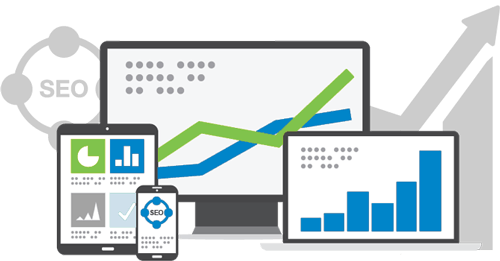Search engine optimization (SEO)
Search Engine Optimization (SEO) is the practice of optimizing a website or web page to improve its visibility and ranking on search engines’ unpaid results, also known as organic or natural search results. The aim of SEO is to increase the quantity and quality of traffic to a website or web page from search engines through optimizing the website’s content, structure, and other factors

SEO Optimization: Elevating Your Online Presence and Visibility
In the vast digital landscape, SEO optimization serves as a guiding light, leading users to discover your online presence amidst the sea of information. This article dives into the world of SEO optimization, exploring its significance, best practices, and strategies that can propel your website to the forefront of search engine results.
1. Introduction: The Power of SEO Optimization
In an era where online visibility is a gateway to success, SEO optimization emerges as a cornerstone strategy to ensure your website not only stands out but flourishes in the digital realm.
2. Understanding Search Engine Optimization (SEO)
Keywords and Their Importance
Keywords are the foundation of SEO. They are the words and phrases users type into search engines to find information, products, or services.
On-Page Optimization
On-page optimization involves optimizing individual web pages for specific keywords, ensuring they rank higher in search engine results.
Off-Page Optimization
Off-page optimization focuses on building quality backlinks from reputable websites, signaling to search engines the credibility and relevance of your content.
Technical SEO
Technical SEO pertains to optimizing the technical aspects of your website to enhance user experience and search engine crawling.
3. The Science of Keywords
Keyword Research and Analysis
Thorough keyword research identifies relevant and high-traffic keywords that align with your content and target audience.
Long-Tail Keywords and User Intent
Long-tail keywords cater to specific user queries, capturing users with intent to engage or convert.
Competitive Keyword Analysis
Analyzing competitors’ keyword strategies helps you identify opportunities to outrank them and gain a competitive edge.
4. On-Page Optimization: Crafting SEO-Friendly Content
High-Quality and Relevant Content
Creating valuable and informative content that addresses user needs establishes authority and encourages engagement.
Title Tags, Meta Descriptions, and Headers
Optimizing title tags, meta descriptions, and headers with target keywords enhances search engine visibility and click-through rates.
URL Structure and Internal Linking
Organized URL structures and strategic internal linking facilitate navigation for users and search engine crawlers.
Image Optimization
Optimizing images with descriptive alt text and proper file sizes improves user experience and accessibility.
5. Off-Page Optimization: Building Quality Backlinks
Importance of Backlinks
Backlinks from reputable and authoritative websites validate your content’s credibility and contribute to higher search rankings.
Guest Blogging and Outreach
Guest blogging and reaching out to relevant websites for backlinks expand your online reach and showcase your expertise.
Social Media Engagement
Engaging on social media platforms increases content visibility, encourages sharing, and attracts traffic to your website.
6. Technical SEO: Enhancing Website Performance
Mobile-Friendly Design
A mobile-responsive website design ensures optimal user experience across various devices.
Page Loading Speed
Fast-loading pages improve user satisfaction and search engine rankings.
XML Sitemaps and Robots.txt
XML sitemaps help search engines crawl and index your site, while robots.txt controls which pages to exclude from crawling.
7. Local SEO: Targeting Your Geographic Audience
Google My Business and Local Listings
Optimizing your Google My Business profile and local business listings boosts visibility in local searches.
Location-Specific Keywords
Incorporating location-specific keywords helps you reach users searching for products or services in your area.
Customer Reviews and Ratings
Positive customer reviews and ratings enhance your local credibility and influence purchasing decisions.
8. Measuring Success with Analytics and Tools
Google Analytics and Search Console
These tools provide insights into website traffic, user behavior, and keyword performance.
SEO Audits and Monitoring Tools
Regular SEO audits and monitoring tools help identify areas for improvement and track progress over time.
9. Evolving Trends in SEO Optimization
Voice search, featured snippets, and video content are among the trends reshaping the SEO landscape.
10. SEO for E-Commerce: Maximizing Online Retail Visibility
E-commerce websites benefit from tailored SEO strategies, including optimizing product pages, user reviews, and secure checkout processes.
11. Conclusion: Your Pathway to Digital Dominance
SEO optimization isn’t just about ranking higher; it’s about creating a seamless user experience, driving organic traffic, and establishing your digital dominance in a competitive online world.

